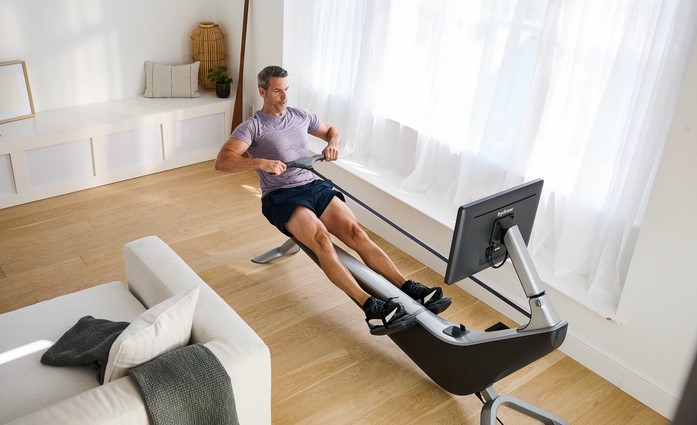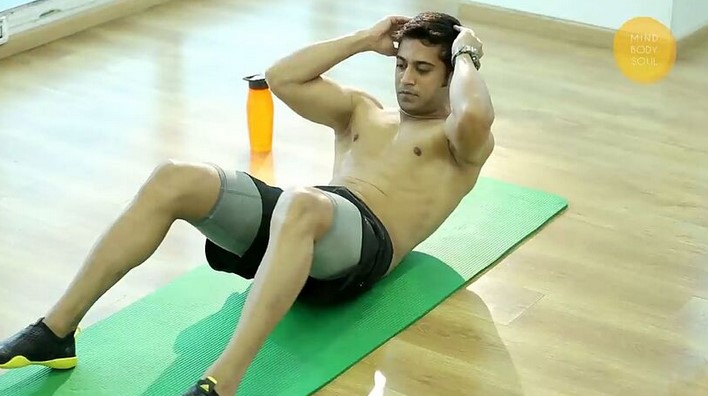
When it comes to full-body workouts that target multiple muscle groups at once, few pieces of equipment can match the effectiveness and efficiency of rowing machines. These versatile machines simulate the action of rowing a boat, offering a dynamic cardiovascular workout that engages the arms, legs, back, and core. Whether you’re looking to build endurance, burn fat, or strengthen muscles, rowing machines provide a comprehensive fitness solution that’s accessible for all fitness levels. In this article, we’ll dive into the benefits of rowing machines, the correct form for optimal results, and how you can incorporate rowing into your fitness routine for maximum benefits.
Why Choose Rowing Machines for Full-Body Workouts?
Rowing machines have long been a staple in commercial gyms, but their popularity has surged in recent years as more people discover their unique ability to deliver full-body workouts. Unlike many other cardio machines, such as treadmills or stationary bikes, rowing machines engage almost every major muscle group in your body. From your legs and glutes to your core, back, and arms, rowing provides an intense workout that builds strength while also improving cardiovascular fitness.
One of the key advantages of rowing machines is that they are low-impact, making them suitable for people of all ages and fitness levels. Whether you’re recovering from an injury, looking to improve your cardiovascular health, or building muscle endurance, rowing provides a safe and effective way to achieve your fitness goals without putting unnecessary strain on your joints.
Another notable benefit of rowing is the fact that it combines both aerobic and anaerobic exercises. While the movement itself is cardiovascular, it also requires strength to push against the resistance of the rower’s flywheel. This combination of endurance and strength training makes rowing machines an efficient choice for a total-body workout.
The Health Benefits of Rowing Machines
Rowing is one of the few exercises that can deliver both cardiovascular and strength-building benefits in a single workout. Here are several ways that rowing machines can improve your overall fitness and health:
1. Full-Body Engagement
As mentioned, rowing engages a wide range of muscles, providing a balanced workout for the entire body. Each stroke on the rowing machine involves both pushing and pulling motions, which recruit muscles in your legs (quadriceps, hamstrings, and calves), your core (abdominals and obliques), your back (latissimus dorsi, trapezius, and rhomboids), and your arms (biceps and triceps). This makes rowing machines an excellent choice for those seeking a full-body workout that doesn’t require multiple pieces of equipment.
- Legs: The initial push-off from the footplate primarily works your quadriceps, hamstrings, and calves. The power in your legs is essential for building strength and endurance.
- Core: As you lean back to pull the oar handle toward you, your core is actively engaged to stabilize your body and transfer power from your legs to your upper body.
- Arms & Back: The pulling action works your arms (biceps and triceps), as well as your back muscles (latissimus dorsi and traps). These muscles help control the oar and provide the strength needed for each stroke.
By engaging multiple muscle groups simultaneously, rowing machines provide a time-efficient way to work out your entire body, making them a great option for individuals with busy schedules who want to maximize their workouts.
2. Improved Cardiovascular Health
Rowing is a powerful cardiovascular exercise that can improve heart and lung health. It helps increase your heart rate, improve circulation, and boost overall cardiovascular endurance. Whether you’re rowing at a moderate or high intensity, the continuous movement and rhythm of rowing help elevate your heart rate, giving you a solid cardiovascular workout. Over time, consistent rowing can help lower your risk of heart disease, improve circulation, and enhance overall fitness levels.
3. Fat Burning and Weight Loss
Rowing machines are also effective for burning calories and promoting fat loss. As a full-body workout, rowing can help you burn significant calories in a relatively short amount of time. According to some estimates, a 30-minute rowing session can burn anywhere from 200 to 400 calories, depending on the intensity of your workout and your body weight. By incorporating high-intensity interval training (HIIT) on the rowing machine, you can boost fat-burning potential even further.
Additionally, because rowing engages both your lower and upper body, it can help you build lean muscle mass while simultaneously burning fat, contributing to an overall leaner physique.
4. Low Impact with High Reward
Unlike activities such as running or high-impact aerobics, rowing is gentle on your joints. The smooth, fluid motion of rowing minimizes the risk of injury, making it an ideal option for those with joint pain, arthritis, or those recovering from an injury. Rowing provides an effective cardiovascular and strength workout without putting excessive stress on your knees, hips, or lower back. This makes it a great option for individuals who are looking to stay active without risking injury.
5. Mental Health Benefits
Like other forms of cardiovascular exercise, rowing also helps boost mood and reduce stress. Exercise, in general, stimulates the release of endorphins, the body’s natural “feel-good” hormones, which can improve mental clarity and reduce symptoms of anxiety and depression. The rhythmic, repetitive nature of rowing can also be meditative, allowing you to clear your mind and focus on the present moment.
Proper Form for Maximum Effectiveness
To get the most out of your rowing machine workout and avoid unnecessary strain or injury, it’s essential to use proper form. Here’s a breakdown of the correct rowing stroke technique:
1. Starting Position: Begin by sitting on the seat with your feet securely strapped into the footplates. Keep your knees slightly bent and your shins vertical. Hold the handle with both hands, arms extended straight in front of you, and engage your core.
2. The Drive: Push through your legs first, extending them fully while maintaining a strong posture. As your legs extend, lean back slightly, keeping your back straight. Pull the handle toward your chest, keeping your elbows close to your body. Your arms should follow the motion of your legs, but the initial power should come from your lower body.
3. The Finish: At the end of the stroke, your legs should be fully extended, and the handle should be pulled into your chest. Lean back slightly (but not too far) with your core engaged and shoulders relaxed.
4. The Recovery: To prepare for the next stroke, extend your arms forward and lean slightly forward from your hips. Bend your knees and slide the seat back toward the starting position. This part of the stroke should be smooth and controlled, allowing you to reset for the next drive.
Maintaining proper form throughout the workout will ensure you maximize the benefits of rowing and minimize the risk of injury.
Rowing machines provide a simple yet incredibly effective way to achieve a full-body workout. Whether you’re aiming to build strength, improve cardiovascular health, or burn fat, rowing engages multiple muscle groups simultaneously, making it an efficient choice for people looking to get the most out of their exercise routines. By maintaining proper form, using high-quality equipment, and staying consistent with your workouts, you can unlock the full potential of rowing machines as part of a balanced fitness plan. Incorporating rowing into your routine will not only improve your fitness but also provide you with the mental and physical benefits that come with a well-rounded, full-body workout.
